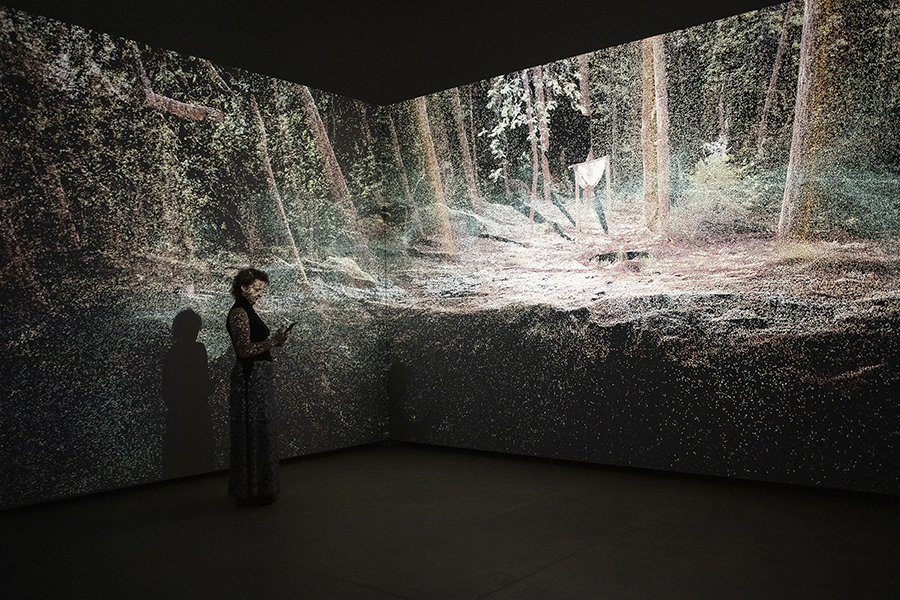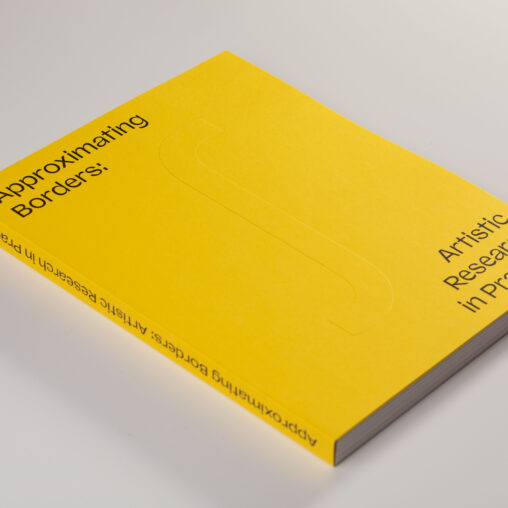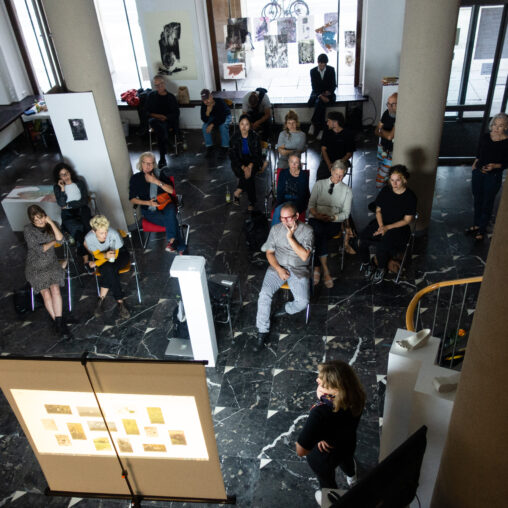Rasa Smite and Raitis Smits talk about their new media and cross-disciplinary work. Since the mid-90s, Smite and Smits have been working as a duo. Engaging with digital media, their pioneering work operates at the intersection of art, science, and emerging technologies. Smite and Smits are key founders of RIXC, the Center for Art and Science in Riga, an important institution established in May 2000 which aims to promote new forms of cultural and artistic expression by adopting approaches to new media. Ever since the beginning of their career, their work and research has had an impact on artistic practices on an international scale.
Raitis Smits is a member of EU4ART_differences project for the Art Academy of Latvia. For the 2022 EU4ART_differences Summer School in Rome, Smits delivered a lecture within a panel on Neuroscience and the Humanities. Taking his artistic and curatorial practice as a point of departure, Smits discussed the use of immersive technologies in the arts. His presentation touched upon key questions, such as the implications of VR and AR in education, and the role of meaning at the intersection of data and new technologies.
In this interview, in a choral dialogue with Veronica Di Geronimo, Manuel Macía, Elena Giulia Rossi, Raitis Smits and Rasa Smite guide us through their latest work, titled Atmospheric Forest (2020)—an immersive installation and part of the research project Ecodata-Ecomedia-Ecoaesthetics (2017-2020) reflecting on climate change in the pine tree forest of Pfynwald in the Swiss Alps, touching on the intersections between artistic research, data, and ecology.

Veronica Di Geronimo, Manuel Macía, Elena Giulia Rossi: We would like to ask how the Atmospheric Forest project came about. We are especially interested in learning more about your understanding of the multiple relationships between data and experience—both in this project and in your general practice. We are thinking about your use of sensory media and the implications of transforming data into something that can be experienced.
Rasa Smite & Raitis Smits: Atmospheric Forest is our latest collaboration with Swiss scientists and researchers from FHNW Academy of Art and Design in Basel. To give you a little bit of history: it all started as a three-year artistic research project Ecodata-Ecomedia-Ecoaesthetics that went from 2017 to 2020 supported by supported by Swiss National Science Foundation. The project was initially designed as a collaboration between artists and scientists from The Swiss Federal Institute for Forest Snow and Landscape Research WSL. It was in the context of this artistic research project residency that Rasa was first invited to collaborate with the Institute. Our previous work has often been based on explorations of nature.

Our most recent projects always involve data in one way or another—including the Atmospheric Forest. Whether scientific datasets or data created with our own devices, data always becomes an important material for our work. When working with nature, data provides a certain level of abstraction that can lead us away from a direct depiction of the world. In this sense, data can give us the freedom of artistic interpretation. Being programmable, datasets from the same observations can be eventually translated into images or sound. In the Atmospheric Forest project, our goal was not to illustrate scientific observations. Instead, we were keen to create a unique immersive experience. In parallel, the datasets we employed for this project provide the basis for a general narrative.
Atmospheric Forest has two main versions: a VR experience and two-channel video projection. The project uses six datasets that were collected by the scientist Kaisa Rissanen and Swiss researchers during one growing season in the pine tree forest of Pfynwald in the Swiss Alps. These recordings include the pressure of the resin, volatile emissions, air temperature, soil and air humidity, and the day-night cycle. We started with a scanned model of the forest that Rasa originally developed using WSL Research Institute equipment. We would say that the visual qualities of those scans suggested new directions for how the data could be visually interpreted. For us, virtual camera movements and sound are equally important elements. We composed the sound using field recordings in the same forest, as well as recordings from our resin melting experiments.
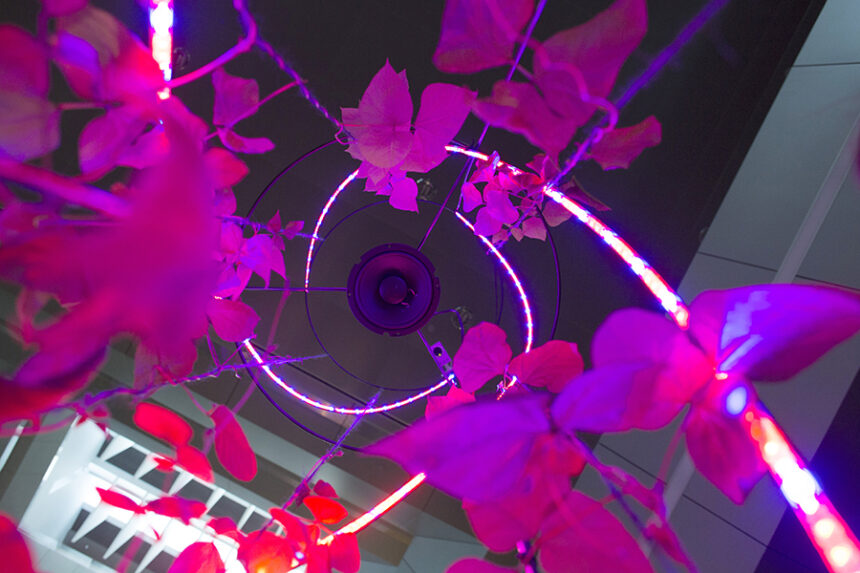
We would like to follow up on a quote by Caroline A. Jones that you often cite: ‘the human sensorium has always been mediated.’ From the perspective of the Atmospheric Forest project—and your artistic practice in general—how do you consider the role of experience in research? How do you understand experimentation, taking into account these relationships/dimensions?
There is a difference between scientific and artistic research. In a way, artists have the privilege of being subjective—they are not expected to prove the results of their research. However, artists are risk-takers, as the only ‘evidence’ they can operate with is how convincing and engaging the artwork is for the spectators. In such a context, we see experience and experiments as two opposite events. On one hand, experience can be very useful in the practical moments that involve what we could call ‘know-how’—like knowing your tools to spare some time in post-production. On the other hand, experimentation in the arts requires a certain degree of freedom and openness to embrace unexpected outcomes. It is worth noting here that experiments can also be carried out with the tools that artists are using. In new media and digital art, there are many examples where artists subvert media tools to highlight issues or ask questions.
We could say that experiments are present in all of our projects—from exploring a particular environment to playing around with new materials. Often, experiments lead to new ideas. For example, when we developed the project Talk To Me (2011–2016), we were looking for a natural power source that could power small electronics outdoors. This is how we came across the MFC (Microbial Fuel Cell) technology. While this technology did not meet our needs at that time, our fascination for experimenting with this material produced wholly new ideas—eventually leading to a new art project, Biotricity (2012–2014).
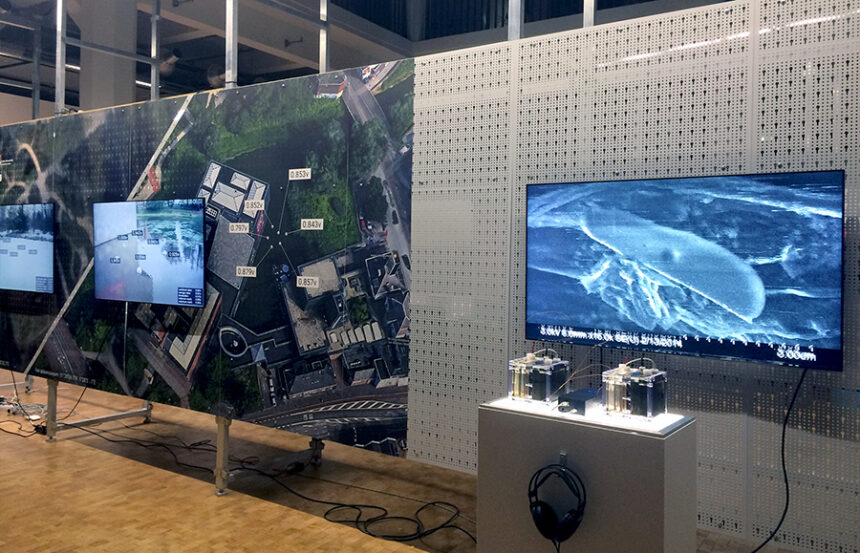
Our final question is more open-ended and concerns how you conceptualise your projects as artistic research. Could you elaborate on the unique potentials that Atmospheric Forest is able to articulate as artistic research? In other words, how does the project articulate research/knowledge that could not be put forward otherwise?
Our artistic practice spans several decades and has continuously involved collaborations with scientists. Most of the time, our joint practice has been research-based. We do not necessarily aim to promote artistic research as such—instead, we are rather interested in using a variety of research methods. Some of these methods are borrowed from science. Ultimately, these methods are able to broaden our knowledge about some particular phenomena or process. For instance, the Atmospheric Forest project is not just a spectacular immersive experience. We also have video interviews with the scientists and video performances where Rasa melts pine resin and transforms it into rosin and turpentine. This material is very important for us because it helps us to contextualise the whole project. We would like to add that—when creating the Atmospheric Forest—we found that working with just digital media was not enough. We realised that the project also required physical aspects. Simply walking into the forest and harvesting the pine resin, which we processed to obtain rosin and turpentine, was an enjoyable process on its own. To conclude, we would like to know if the Atmospheric Forest is able to invite viewers to conceive of the forest ecosystem as a series of interconnected and continuous processes—most of which are not visible.
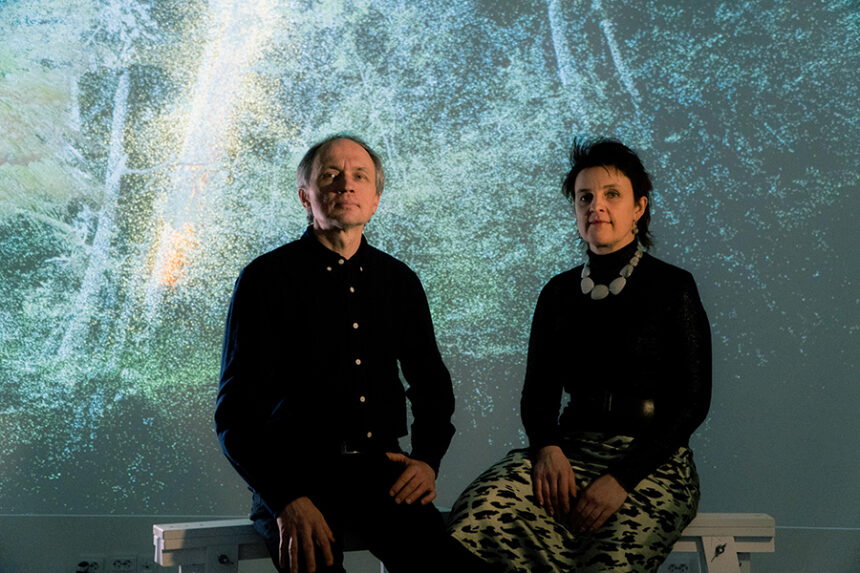
images: (cover 1) Rasa Smite, Raitis Smits, Atmospheric Forest, Purvitis Prize 2021 Nominee exhibition at the Latvian National Museum of Art, ph Kristīne Madjare (2) Rasa Smite, Raitis Smits, Atmospheric Forest, solo exhibition at the RIXC gallery, ph: Kristīne Madjare (3) Rasa Smite, Raitis Smits, Atmospheric Forest, solo exhibition at the RIXC, ph: RIXC (4) Rasa Smite, RaitisSmits, Talk To Me, solo exhibition at the National Library of Latvia, 2017, ph.: Kristīne Madjare (5) Rasa Smite, Raitis Smits, Biotricity. Fluctuations of Micro-Worlds, Open Codes exhibition, ZKM, Karlsruhe, 2017 – 2018, ph: RIXC (6) Rasa Smite, Raitis Smits, ph. RIXC
Atmospheric Forest (2020), artwork by Rasa Smite and Raitis Smits, is an outcome of research project Ecodata–Ecomedia–Ecoaesthetics (2017–2021), realised by Yvonne Volkart (Principal Investigator), artists Marcus Maeder, Rasa Smite and Aline Veillat, in collaboration with scientists Arthur Gessler, Christian Ginzler, Andreas Rigling, Swiss Federal Institute for Forest, Snow and Landscape Research WSL, and Kaisa Rissanen, WSL and University of Helsinki. It is funded by the Swiss National Science Foundation and hosted by the Academy of Art and Design FHNW Basel.
You can view more about Ecodata Project here
Raitis Smits’ lecture The Use of Immersive Technologies (VR and AR) in Arts ( September, 2022) was part of The Doctoral Summer School: Digital Rites and Embodied Memories, art of the project EU4ART_differences took place at Casa San Silvestro, Monte Compatri (RM) and online, September 6 – 9, 2022. Please download here the press release for the talks open to the public, here the flyer for the online morning lectures’ complete program and links for registration, here the program with authors’ abstracts and bios, and here the web brochure dedicated to the SUMMER SCHOOL.
You can visit here Rasa Smite and Raitis Smits’ website for more information on their artistic collaborations.
